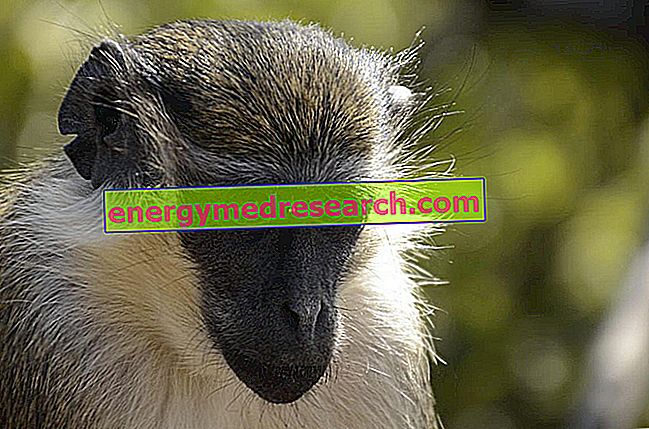
What is Helicobacter Test INFAI?
Helicobacter Test INFAI is a diagnostic test. It is found in a bottle in the form of a powder to be reconstituted in a drinking solution.
The powder is the active ingredient 13C urea (45 mg for children and adolescents or 75 mg for adults).
What is Helicobacter Test INFAI used for?
Helicobacter Test INFAI is used for the diagnosis of Helicobacter pylori infection in the stomach and duodenum (the first part of the small intestine). H. pylori is a bacterium that contributes to the appearance of diseases such as dyspepsia (gastric acidity, abdominal bloating and nausea), gastritis (inflammation of the stomach) and peptic ulcer (ulcerative lesions of the stomach or duodenum). Helicobacter Test INFAI is used in the diagnosis of infection in adults, adolescents with predisposition to peptic ulcer and in children from 3 to 11 years of age. In children it can only be used if invasive techniques cannot be used (for example, taking a sample from the stomach using a probe) or in the presence of discordant results resulting from invasive analysis, or to evaluate the effectiveness of the elimination therapy of H. pylori . The medicine can only be obtained with a prescription.
How is Helicobacter Test INFAI used?
Helicobacter Test INFAI is a
: expiration samples are collected, which are sent to a specialized laboratory for analysis.
To perform the test the patient must collect four breath samples, two before taking the Helicobacter Test INFAI and two afterwards. The patient must have been fasting for at least 6 hours, preferably overnight. First of all, the patient collects two breath samples using the container or bag supplied with Helicobacter Test INFAI. Subsequently the patient consumes the "test meal" (200 ml of undiluted orange juice or 1 g of citric acid dissolved in 200 ml of water), then ingests the solution of Helicobacter Test INFAI dissolved in water. Finally, 30 minutes after administration of the solution, the patient collects two more breath samples. In 3-11 year olds the "test meal" consists of 100 ml of undiluted orange juice. For more information on performing the test, see the package leaflet.
How does Helicobacter Test INFAI work?
The active ingredient of Helicobacter Test INFAI, 13C urea, is the natural chemical urea labeled with carbon 13 (13C). This means that it contains 13C, a rare form of the carbon atom, instead of
carbon 12 (12C), the most widespread form in nature.
H. pylori contains enzymes, called urease, which make it able to break down urea into carbon dioxide, which is eliminated by exhalation. When the patient takes Helicobacter Test INFAI, the 13C urea contained in the solution is transformed by H. pylori into carbon dioxide, which also contains 13C. This marked carbon dioxide can be measured by specialized laboratories using a technique called "mass spectrometry". If after 30 minutes the exhaled air sample contains marked carbon dioxide (positive test), this means that an H.pylori infection is in progress. If the exhaled air is free of marked carbon dioxide, this means that there are no bacteria in the stomach or duodenum.
What studies have been performed on Helicobacter Test INFAI?
Helicobacter Test INFAI was examined in four studies involving a total of 561 adult patients and in a study of 335 children and adolescents. All these subjects received 75 mg of 13C urea, except for 204 children under the age of 11, where the dose was 45 mg. One of the studies on adults was carried out with subjects who had been subjected to antibiotic treatment to cure the infection. In all the studies the patients underwent endoscopy and histology (removal of a tissue fragment from the stomach and subsequent microscopic analysis) as well as the breath test with Helicobacter Test INFAI, in order to compare the results of the two diagnostic tests.
What benefit has Helicobacter Test INFAI shown during the studies?
In all the studies the results of the examination carried out with Helicobacter Test INFAI agreed with the results obtained with endoscopy and histology in more than 95% of cases.
What is the risk associated with Helicobacter Test INFAI?
No side effects are known. However, if the patient vomits during the execution of the test, making it necessary to repeat it, this cannot be done before the following day.
Helicobacter Test INFAI should not be performed on patients with established or suspected gastric infection or atrophic gastritis (inflammation of the stomach that causes destruction of the mucosa of the lining of the stomach), which could interfere with the breathing test.
Why has Helicobacter Test INFAI been approved?
The Committee for Medicinal Products for Human Use (CHMP) decided that the benefits of Helicobacter Test INFAI outweigh its risks for use in the in vivo diagnosis of H. pylori gastroduodenal infection in adults and adolescents with ulcer susceptibility peptic, as well as in children aged 3 to 11 years to assess the efficacy of eradication therapy or if invasive techniques cannot be used or in the presence of discordant results resulting from invasive analysis and has therefore recommended the release of the authorization for entry into product trade.
Further information on Helicobacter Test INFAI:
On 14 August 1997, the European Commission granted a marketing authorization for the Helicobacter Test INFAI, valid throughout the European Union, to INFAI, Institut für biomedizinische Analytik & NMR-Imaging GmbH. The marketing authorization was renewed on 14 August 2002 and 14 August 2007.
For the full EPAR version of Helicobacter Test INFAI click here.
Last update of this summary: 09-2007.



